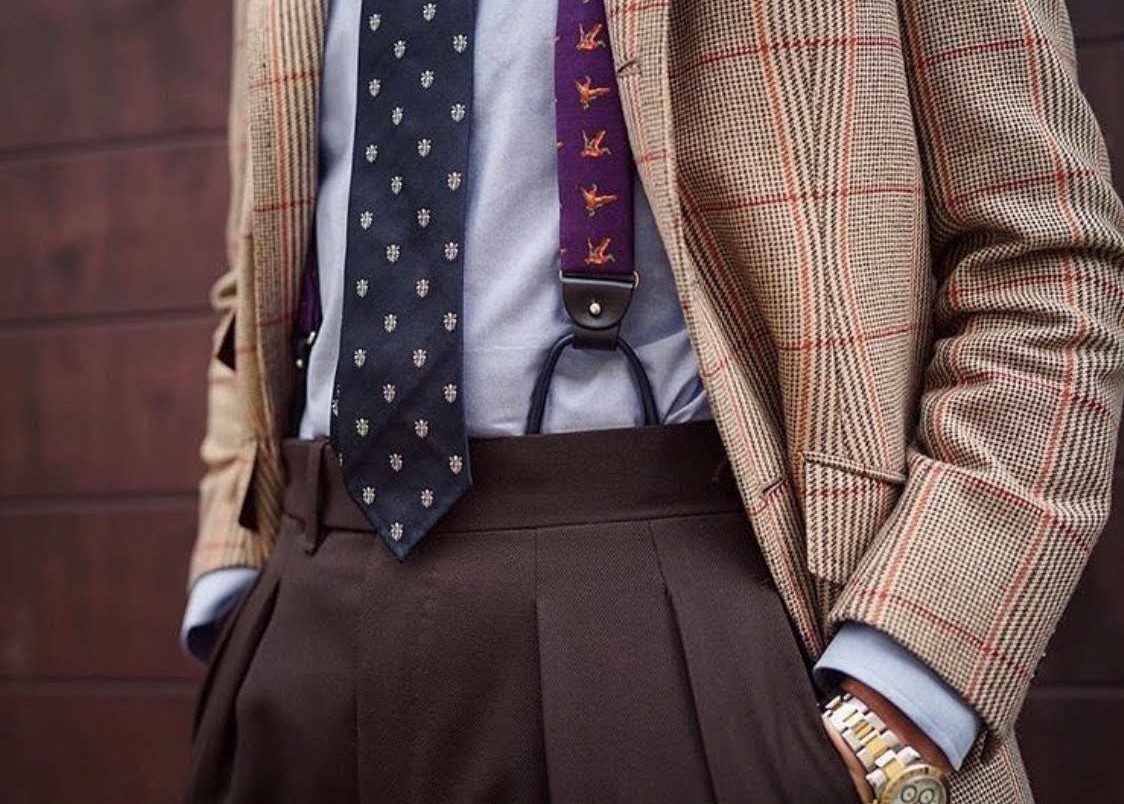
 Alessandro Di Lullo
Alessandro Di Lullo
Italian lifestyle and fashion: The Italian Gentleman’s Wardrobe. A guide by Sartoria Carfora. Part 3, Winter
- WTI Magazine #163 May 20, 2023
-

 Alessandro Di Lullo
Alessandro Di Lullo
Traditional clothing is built upon fabrics, whose realm has always spoken the language of wool. Knowing that no season is superior to another, as the qualitative perspective deems the difference itself to be more important than any individual term, the Classic man particularly loves winter for the variety of styles and fabrics in which wool still reigns supreme.
Let’s now therefore open our ideal wardrobe to fabrics and garments designed not only to keep us warm but also to express ourselves as men.
Formal context
As the world has fully reopened, black-tie occasions have been increasing, especially during the winter months. If consecutive events start appearing on the agenda, one tuxedo won't be enough, and a couple must be acquired. One option is to choose a combination based on seasonality, opting for brushed flannel for winter and mohair or lightweight barathea, perhaps with a white jacket, for summer.
The other solution is to differentiate based on purpose and opt for a more formal ensemble, maybe with a vest, for theatrical premieres and other culturally-oriented events, and a more relaxed, fitted, and physical second tuxedo in drier fabrics for social or dancing receptions. Among the most common materials, it's worth noting that flannel is suited for single-breasted jackets, while barathea accommodates all options and shines particularly in double-breasted jackets.
Beyond tuxedos, an evening double-breasted suit in covered blue brushed fabric, with tone-on-tone patterns or barely discernible stripes and a daytime double-breasted suit in medium gray carded flannel are great choices. The latter was among Fred Astaire's favorite garments and the most typical suit of the late Agnelli, when the "Avvocato" had learned to condense the entire male world into the fewest elements and colors possible.
Taking inspiration from such masters, venturing into wearing this suit will appear as a significant milestone for the wardrobe and the individual, as they can only grow in parallel. A dark gray three-piece suit for formal occasions or important business meetings. There isn't much to say about this type of suit, except that being quite understated, it must possess an impeccable line and therefore be tailored by a highly skilled tailor. The fabric can range from a simple worsted, to a herringbone pattern, or finally, a pin-dot three-piece suit, representing the peak of the high mountain range that connects formality and masculinity. A double or single-breasted suit with a vest in Prince of Wales patterned Saxony fabric.
Informal context
A three-button daytime suit in cheviot with typical thin and shiny stripes on a gray or muted blue background. These types of fabrics can be a bit challenging to appreciate because, apart from Cary Grant, they also remind us of some high school principals. In fact, depending on the spirit and accessories with which it is worn, it can transition from informal to strictly formal. It should be tailored with a certain degree of looseness, as it often likes to accommodate a sweater or a rather thick vest underneath the jacket, giving it a relaxed touch. Being highly durable, it is a reliable travel companion.
Once worn, the unsuspected thermal flexibility and the authoritative yet not austere presence that this garment expresses easily make it one of your favorites. The only drawback is its weight, which grants access to this type of fabric, not easily obtainable, only to those who possess not only the taste but also the physique of a classic man. A single-breasted travel suit in not overly heavy thornproof, such as the traditional Sportex, or in a rare crossbred fabric. A single-breasted navy blue hopsack blazer with three white metal buttons. Far from being stiff, when worn with medium gray worsted trousers, it can even appear in a professional setting, exuding liveliness and a professional element that is not obsessed with one's career.
Casual context
A double-breasted navy blue blazer with gold buttons, with its declared military origins, is the jacket of yachting clubs, but also suitable for weekend getaways to the seaside out of season. Like other jackets designed for the open air, it doesn't like to be covered by a coat. It loves to show off. In leisure time, when the mood and environment allow, it's nice to wear it over white Bedford cord or flannel trousers. When worn with beige cavalry trousers, it takes on a casual and outgoing tone.
Other great winter companions are a single-breasted jacket with patch pockets in burnt tones of Donegal tweed, a single-breasted jacket with welt pockets in herringbone Harris tweed, a single-breasted jacket in Scottish tweed with authentic district checks. The style can be inspired by a wide range of examples and should be chosen with appropriate attention. Options range from the hacking jacket, a simple equestrian garment characterized by a central vent, slanted welt pockets, and a pocket flap closure, to the monumental Norfolk jacket with large applied pockets at the bottom, chest hand-warmer pockets, sewn-in shoulder straps, and a distinctive belt added to the four front buttons. Although these jackets, except for the hacking jacket, can also be worn as part of a suit, it is generally preferred to let them stand alone and pair them with dark carded flannel trousers.